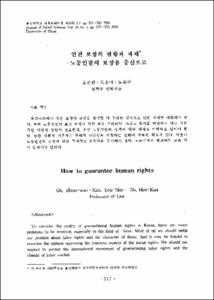족관절 골절의 임상적 고찰
- Alternative Title
- A Clinical Study of Ankle Fracture
- Abstract
- The ankle joint is a modified complex hinge joint which plays an important role in weight bearing, walking and standing. So, the goals of treatment of ankle fracture are anatomical positioning of the talus in the mortise and regaining a smooth articular surface. The Lauge-Hansen classification of ankle fracture is useful because it characterized the mechanism and sequence of injury and in particular, emphasizes the associated ligamentous injuries. But, it is more complex and all fractures do not conform exactly to one of the described pattern. The Danis-Weber classification of ankle fracture is simpler, emphasized the importance of the lateral side of the ankle, and is usuful in planning surgical treatment. Initially this system did not distinguish the extent of involvement and was too inclusive. The problem has been addressed in the AO classification. The system proposed by Tile is easy to remember and emphasized the importance of assessing and relating stability to the structures that are injured.
We analyzed 124 cases of ankle fracture, most of which were treated surgically by AO methods, in the Orthopedic Department, University of Ulsan Medical College, Asan Medical Center from July 1989 to March 1992.
The results obtained from this study were as follows :
1. The most common victim was 3rd-5th decade's man.
2. The most common type of Danis-Weber classification was type C(36.3%) and most common type of AO classification was type C1(15.3%), C2(15.3%). According to the classification of Lauge-Hansen, the most common type was pronation-external rotation (42.7%).
3. In Danis-Weber type B and C, satisfactory results were obtained by operative treatment.
4. Danis-Weber's classification and A-O classification were very practical criteria for treatment of the ankle fracture.
The ankle joint is a modified complex hinge joint which plays an important role in weight bearing, walking and standing. So, the goals of treatment of ankle fracture are anatomical positioning of the talus in the mortise and regaining a smooth articular surface. The Lauge-Hansen classification of ankle fracture is useful because it characterized the mechanism and sequence of injury and in particular, emphasizes the associated ligamentous injuries. But, it is more complex and all fractures do not conform exactly to one of the described pattern. The Danis-Weber classification of ankle fracture is simpler, emphasized the importance of the lateral side of the ankle, and is usuful in planning surgical treatment. Initially this system did not distinguish the extent of involvement and was too inclusive. The problem has been addressed in the AO classification. The system proposed by Tile is easy to remember and emphasized the importance of assessing and relating stability to the structures that are injured.
We analyzed 124 cases of ankle fracture, most of which were treated surgically by AO methods, in the Orthopedic Department, University of Ulsan Medical College, Asan Medical Center from July 1989 to March 1992.
The results obtained from this study were as follows :
1. The most common victim was 3rd-5th decade's man.
2. The most common type of Danis-Weber classification was type C(36.3%) and most common type of AO classification was type C1(15.3%), C2(15.3%). According to the classification of Lauge-Hansen, the most common type was pronation-external rotation (42.7%).
3. In Danis-Weber type B and C, satisfactory results were obtained by operative treatment.
4. Danis-Weber's classification and A-O classification were very practical criteria for treatment of the ankle fracture.
- Issued Date
- 1992
- Type
- Research Laboratory
- Alternative Author(s)
- Kim, Key-Yong; Yoon, Jun-O; Lee, Soo-Ho; Shin, Hun-Kyu
- Publisher
- 울산의대학술지
- Language
- kor
- Rights
- 울산대학교 저작물은 저작권에 의해 보호받습니다.
- Citation Volume
- 1
- Citation Number
- 1
- Citation Start Page
- 110
- Citation End Page
- 119
- Appears in Collections:
- Research Laboratory > The ULSAN university medical journal
- 파일 목록
-
-
Download
 000002024617.pdf
기타 데이터 / 1.8 MB / Adobe PDF
000002024617.pdf
기타 데이터 / 1.8 MB / Adobe PDF
-
Items in Repository are protected by copyright, with all rights reserved, unless otherwise indicated.